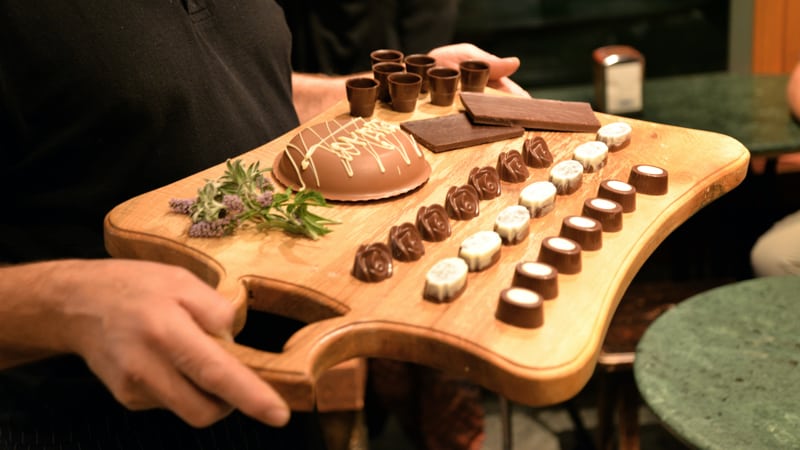Health: How to Throw a Chocolate-Tasting Party
For a special occasion or ... just when you're craving chocolate!

Uncork the vino, put out a selection of chocolate bars and invite friends to bring favorites to share. Slowing down to savor the sight, scent and complexity of flavor will give you a deeper appreciation for every bar. Here, pointers on what to buy and, best of all, how to taste.
1. Shop
Select three to four chocolate bars with a limited number of ingredients so you can really experience the flavor of the cocoa. Pick single-origin bars that have approximately the same percentage of cocoa mass (72% cacao, for example) and similar ingredients. A great place to start for a variety of flavors are with bars from Ecuador, Ghana, Venezuela and Madagascar. Or try sampling a few chocolates from the same origin by different makers — an excellent way to understand how the skills of a chocolatier are revealed through the bar.
2. Examine
Before you dig in, look at the chocolate’s color, sheen and shape. These visuals prime you for what’s to come. Any whitish cast (known as “bloom”) is the separation of cocoa fat, not mold. This can happen if the chocolate wasn’t kept at a consistent temperature.
3. Hear, hear
Hold the bar up to your ear and listen to how it breaks. A tight snap is a sign of good tempering.
4. Inhale
Now smell the chocolate and notice what aromas are strongest. Most of what we think of as flavor comes from smell, not taste. Cocoa from Ecuador is known for nuttiness, while Venezuelan cocoa is celebrated for more delicate, caramel-like notes. The diversity of scents you can find in chocolate rival those found in wine. (If you want to really geek out on all the different scents, tastes and mouthfeels, check out the Chocolate Sensory Wheel from renowned chocolate manufacturer Barry Callebaut.)
5. Start dark
Taste chocolate in order of intensity — from dark to milk — beginning with bars that have a higher percentage of cocoa mass (and less sugar) and working your way to those with lower amounts. This ensures the sugar and lactose in the milk powder — or any other added ingredients — won’t overwhelm your palate before you have a chance to appreciate the flavor of the darker cocoas.
6. Taste
Place a small piece of chocolate on your tongue and allow it to melt and coat your mouth. Cocoa beans are about 50% fat (cocoa butter). The aromas bound up in that fat fully disperse when chocolate starts to melt. You will now experience not only the smells, but also the tastes: sweet, sour, salty, bitter and umami.
7. Think texture
Notice the mouthfeel of the chocolate. Is it creamy or waxy? Is the texture rough or velvety? Assess the finish: does it linger or end quickly? There is no gold standard in terms of texture; it simply indicates the amount of fat in the bean and the way the cocoa was processed. Cocoa ground in a stone mill, for example, will have a rougher texture, while the addition of extra cocoa butter makes a bar silkier.
8. Refresh
The formal way to taste is to have a small sip of room-temperature water and an unsalted cracker between bites to cleanse your palate. Otherwise, dig right back in and sample again. And again. And again.
EatingWell is a magazine and website devoted to healthy eating as a way of life. Online at www.eatingwell.com.


